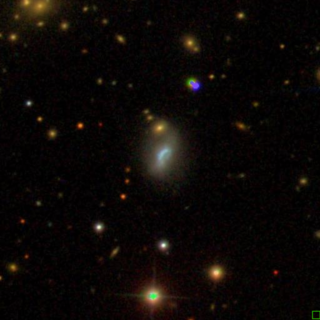
NGC 469 is a spiral galaxy in the constellation Pisces. Located approximately 167 million light-years from Earth, it was discovered by Albert Marth in 1864.
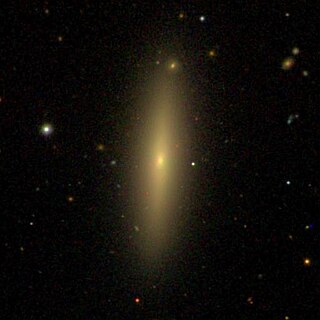
NGC 4623 is an edge-on lenticular or elliptical galaxy located about 54 million light-years away in the constellation of Virgo. NGC 4623 is classified as an E7, a rare type of "late" elliptical that represents the first stage of transition into a lenticular galaxy. NGC 4623 was discovered by astronomer William Herschel on April 13, 1784. NGC 4623 is a member of the Virgo Cluster.

NGC 4498 is a barred spiral galaxy located about 50 million light-years away in the constellation Coma Berenices. NGC 4498 was discovered by astronomer William Herschel on March 21, 1784. NGC 4498 is a member of the Virgo Cluster.

NGC 1426 is an elliptical galaxy approximately 59 million light-years away from Earth in the constellation of Eridanus. It was discovered by William Herschel in December 9, 1784.

NGC 6039 is a massive lenticular galaxy located about 460 million light-years away in the constellation Hercules. NGC 6039 was discovered by astronomer Édouard Stephan on June 27, 1870 and later rediscovered by astronomer Lewis Swift on June 27, 1886. NGC 6039 is member of the Hercules Cluster, which is part of the CfA2 Great Wall.

NGC 6040 is a spiral galaxy located about 550 million light-years away in the constellation Hercules. NGC 6040 was discovered by astronomer Édouard Stephan on June 27, 1870. NGC 6040 is interacting with the lenticular galaxy PGC 56942. As a result of this interaction, NGC 6040's southern spiral arm has been warped in the direction toward PGC 56942. NGC 6040 and PGC 56942 are both members of the Hercules Cluster.
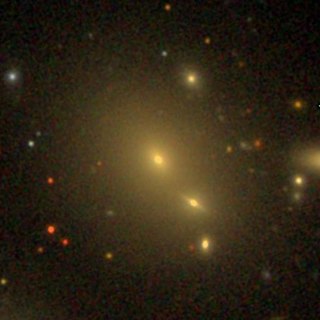
NGC 6041 is a giant elliptical galaxy located about 470 million light-years away in the constellation Hercules. NGC 6041 has an extended envelope that is distorted towards the galaxy pair Arp 122. NGC 6041 is the brightest galaxy (BCG) in the Hercules Cluster. The galaxy was discovered by astronomer Édouard Stephan on June 27, 1870.

NGC 4564 is an elliptical galaxy located about 57 million light-years away in the constellation Virgo. NGC 4564 was discovered by astronomer William Herschel on March 15, 1784. The galaxy is also a member of the Virgo Cluster.
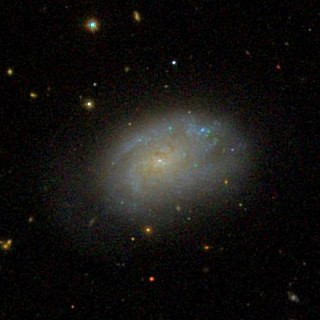
NGC 4595 is a spiral galaxy located about 42 million light-years away in the constellation Coma Berenices. NGC 4595 was discovered by astronomer William Herschel on January 14, 1787. NGC 4595 is a member of the Virgo Cluster.

NGC 4598 is a barred lenticular galaxy located in the constellation Virgo. NGC 4598 was discovered by astronomer William Herschel on April 15, 1784. The distance to NGC 4598 has not been accurately determined; measurements vary from 64 to 102 million light-years. According to the NASA/IPAC Extragalactic Database, its redshift based distance is 102 Mly (31.3 Mpc) while its redshift independent based distance is 88.71 Mly (27.200 Mpc). Also, according to SIMBAD, its distance is 63.7 Mly (19.54 Mpc). NGC 4598's average distance is 84.8 Mly (26.0 Mpc). NGC 4598 is usually considered to be a member of the Virgo Cluster. However, P. Fouqu´e et al. suggests it may be a background galaxy independent of the main cluster.
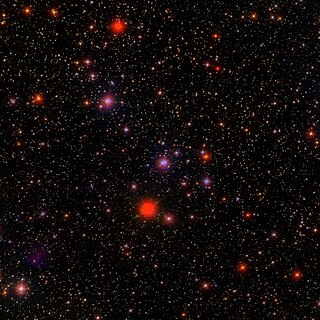
NGC 2202 is an open cluster in the constellation Orion. The object was discovered in 1825 by the German-Russian astronomer Friedrich Georg Wilhelm von Struve.
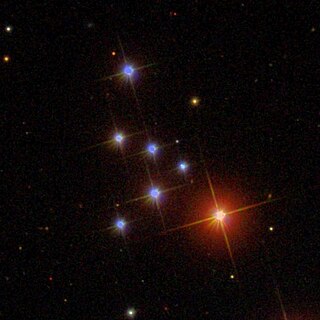
NGC 7772 is collection of stars in the constellation Pegasus that were thought to be an open cluster. The stars were first recorded on 7 October 1825 by the British astronomer John Herschel. Gaia data shows stars in the area are unrelated.

NGC 4886 is an elliptical galaxy located about 327 million light-years away in the constellation Coma Berenices. NGC 4886 was discovered by astronomer Heinrich d'Arrest on April 6, 1864. It was then rediscovered by d'Arrest on April 22, 1865, and was listed as NGC 4882. NGC 4886 is a member of the Coma Cluster.

NGC 4883 is a barred lenticular galaxy located about 315 million light-years away in the constellation Coma Berenices. NGC 4883 was discovered by astronomer Heinrich d'Arrest on April 22, 1865. It is a member of the Coma Cluster.
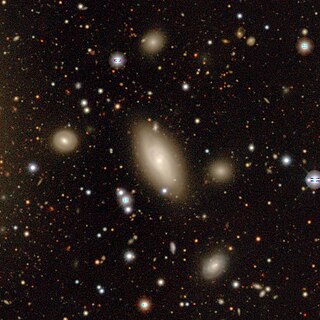
NGC 3307 is a lenticular galaxy located about 185 million light-years away in the constellation Hydra. The galaxy was discovered by astronomer John Herschel on March 22, 1836 and is a member of the Hydra Cluster.
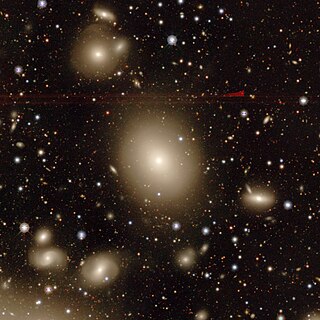
NGC 3308 is a lenticular galaxy with a faint bar located about 174 million light-years away in the constellation Hydra. NGC 3308 was discovered by astronomer John Herschel on March 24, 1835. It is a member of the Hydra Cluster.

NGC 1273 is a lenticular galaxy located about 245 million light-years away in the constellation Perseus. It was discovered by astronomer Heinrich d'Arrest on February 14, 1863 and is a member of the Perseus Cluster.

NGC 4207 is a spiral galaxy located about 50 million light-years away in the constellation Virgo. The galaxy was discovered by astronomer Heinrich d'Arrest on March 23, 1865. NGC 4207 is a member of the Virgo Cluster.

NGC 4895 is a lenticular galaxy located 330 million light-years away in the constellation Coma Berenices. The galaxy was discovered by astronomer Heinrich d'Arrest on May 5, 1864 and is a member of the Coma Cluster.

NGC 4297 is a lenticular galaxy located about 200 million light-years away in the constellation Virgo. It was discovered by astronomer William Herschel on April 13, 1784. It forms an interacting pair with NGC 4296.




















